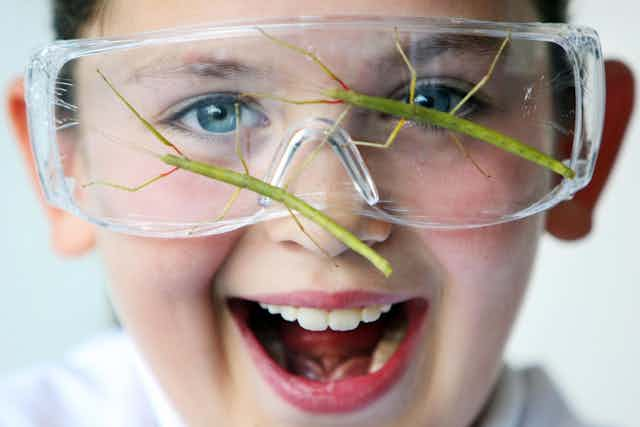Today marks the end of National Science Week, an annual celebration of Australian science. It’s always a fun week in which scientists get to share their research with the public, where museums and universities throw open their doors a bit wider with extra hands-on exhibitions and events, and a time for us to celebrate the awesome achievements of our country’s scientific community.
For me, science week always gets me thinking about my childhood, my love of science, and afternoons spent in the shed building all manner of weird and wonderful contraptions.
This year my science week started on Saturday morning when I was a judge at the Young Information and Communication Technology (ICT) Explorers event here at the University of Queensland.
Students from all over the state came to Brisbane to showcase their projects with robots, websites, mobile phone applications and more on display. These students had worked for a year on their projects, both in and outside of the classroom. From the projects I saw, it was clear that the ICT future in this state is in good hands … so long as we support students when they get to uni.

During high school in the mid-90s I spent my afternoons with my other nerdy mates building computers, a lightning generator (see photo above), a solar oven, wireless transmitters and other similarly wacky and possibly illegal devices.
We loved these projects and found mateship and pride in watching something we’d pumped our money, mental and physical efforts into light up for the first time. We all loved science, but found that the conventional classroom did not allow enough freedom to truly explore the boundaries of science.
Some of our projects took us well over a year, which fell well outside of a conventional school term, and many of our projects had concepts ranging from chemistry to physics and biology.
The backyard shed, with its four tin walls, gave us a conceptual space that seemed to have none. In the shed we were free to explore in any direction, our creativity only limited by the tools and parts we could afford. In a time when personal computers cost upwards of $3,000 we came upon these limitations somewhat frequently.
Fast-forward to today and those sheds still exist, but what has changed is the access to information and availability of parts and tools to let that creativity roam free. Many of the projects at the Young ICT Explorers event made use of the Arduino platform, an open-source electronics prototyping platform based on flexible and easy-to-use hardware and software. These kits cost $35 (including postage) – the equivalent technology in the 90s would have cost us well over $500!
While I saw the same passion for science in the students that I once had, the difference is that they have a toolbox overflowing with possibilities, and they are far less constrained by cost. Cheap, high-powered and flexible technology is helping our children create and discover science better than any generation before. All we need to do is provide them with some encouragement and a safe place to do so.
National Science Week may be over for another year, but the passion for science I saw in the eyes of those students will keep me going for the next ten.

